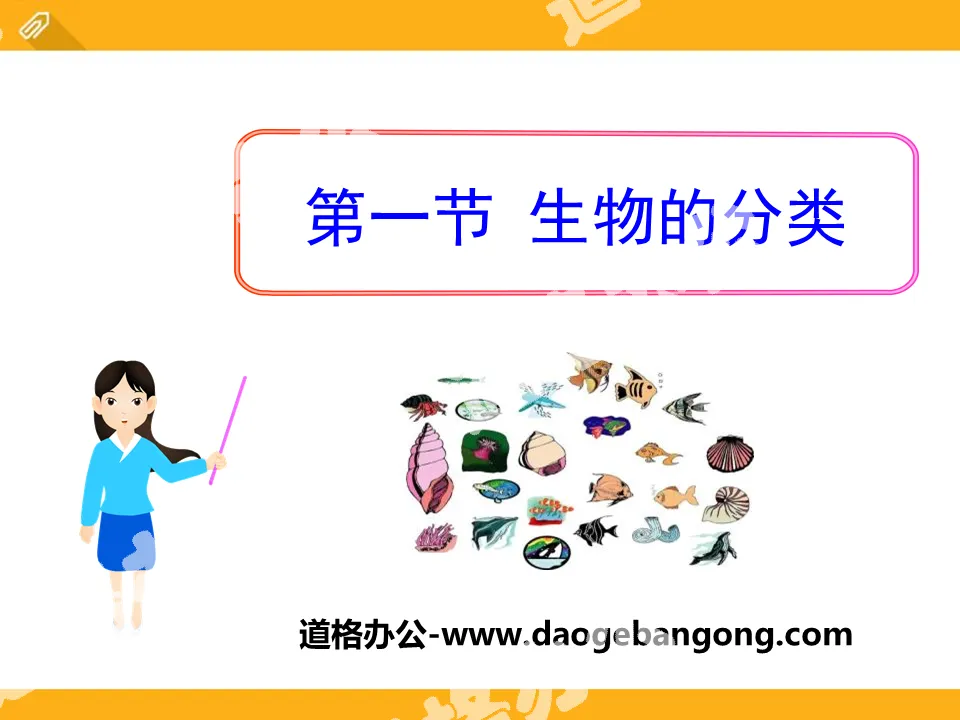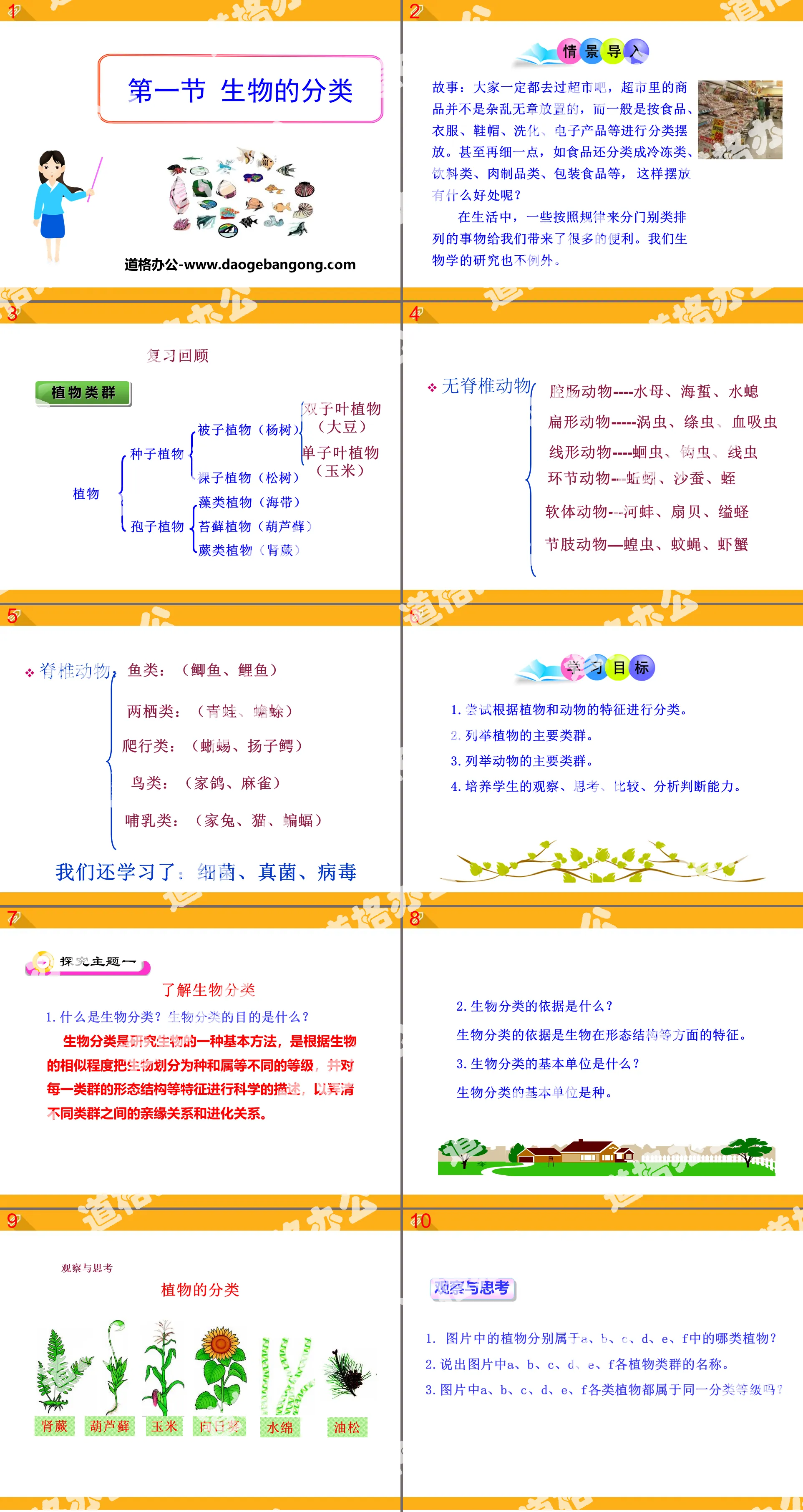People's Education Edition Biology for Grade 8, Volume 1
People's Education Edition seventh grade biology volume 1
People's Education Edition Biology for Grade 8, Volume 2
Beijing Normal University Edition Seventh Grade Biology Volume 2
People's Education Press High School Biology Compulsory Course 2
People's Education Press seventh grade biology book volume 2
Beijing Normal University Edition Eighth Grade Biology Volume 2
Beijing Normal University Edition Seventh Grade Biology Volume 1
Beijing Normal University Edition Eighth Grade Biology Volume 1
High School Biology Compulsory Course 1, published by People's Education Press
Jiangsu Education Edition Seventh Grade Biology Volume 1
Jiangsu Education Edition 8th Grade Biology Volume 1
Jiangsu Education Edition Seventh Grade Biology Volume 2
Jiangsu Education Edition 8th Grade Biology Volume 2

| Category | Format | Size |
|---|---|---|
| Beijing Normal University Edition Eighth Grade Biology Volume 2 | pptx | 6 MB |
Description
"Classification of Organisms" PPT
Part One: Situation Import
Story: Everyone must have been to the supermarket. The products in the supermarket are not placed in a haphazard manner, but are generally placed according to categories such as food, clothes, shoes and hats, laundry, electronic products, etc. Even more detailed, for example, food is classified into frozen, beverages, meat products, packaged foods, etc. What are the benefits of placing them in this way?
In life, some things that are classified and arranged according to rules bring us a lot of convenience. Our biological research is no exception.
learning target
1. Try to classify plants and animals based on their characteristics.
2. List the main groups of plants.
3. List the main groups of animals.
4. Cultivate students’ abilities of observation, thinking, comparison, analysis and judgment.
Classification of living things PPT, part 2 content: exploration theme
Learn about biological classification
1. What is biological classification? What is the purpose of biological classification?
Biological classification is a basic method for studying organisms. It divides organisms into different levels such as species and genera based on the degree of similarity of organisms, and scientifically describes the morphological structure and other characteristics of each group to clarify the differences between different groups. phylogeny and evolutionary relationships.
2. What is the basis for biological classification?
The basis of biological classification is the characteristics of organisms in terms of morphological structure and other aspects.
3. What is the basic unit of biological classification?
The basic unit of biological classification is the species.
Observe and think
1. Which type of plants do the plants in the picture belong to A, B, C, D, E, and F?
2. Name each plant group A, B, C, D, E, F in the picture.
3. Do the plants A, B, C, D, E, and F in the picture belong to the same classification level?
Classification of living things PPT, the third part: plant groups
1. Spore plants
(1) Algae plants: have no differentiation of roots, stems, and leaves, and rely on spores to reproduce their offspring.
(2) Bryophytes: Some have stems, leaves, and only rhizoids (rhizoids are not roots, they are just fixed plants and cannot absorb water and inorganic salts), and they reproduce by spores.
(3) Ferns: have roots, stems, leaves, no flowers, no fruits and seeds, and rely on spores to reproduce.
2. Seed plants
Gymnosperms: developed roots, stems, and leaves, exposed seeds, and no pericarp covering.
Angiosperms: have roots, stems, leaves, flowers, fruits, and seeds. The seeds are not exposed and are covered with pericarp.
Monocotyledonous plants: There is a cotyledon in the seed embryo, and the leaf veins are generally parallel veins.
Dicotyledonous plants: There are two cotyledons in the seed embryo, and the leaf veins are generally reticular veins.
Classification of living things PPT, part 4 content: Classification of animals
hint
1. In addition to comparing morphological structures, animals are often classified based on comparing internal structures and physiological functions.
2. Separate the 10 animals according to the classification of plants.
3. When classifying, the 10 animals can be divided into two groups according to the presence or absence of vertebrae in the body, and then classified according to the characteristics of each animal.
4. Different animal groups should be arranged in order from simple to complex.
5. List these animals into the corresponding positions in the table.
Organize and summarize
1. What is the basis for animal classification?
In addition to comparing external morphological structures, animal classification often also requires comparing internal structures and physiological functions of animals.
2. What are the main groups of animals from simple to complex?
Invertebrates: protozoa, coelenterates, platyhelminthes, linear animals, annelids, molluscs, arthropods, etc.
Vertebrates: fish, amphibians, reptiles, birds, mammals.
Classification of living things PPT, part 5: training to meet standards
1. Which of the following items is not used as the main basis for animal classification ( )
A.External morphology and structure
B. Internal structure
C.Physiological functions
D.Body size
2. When Xiao Ming classifies plants, he puts rice, watermelon, and pine trees into one category, and kelp, moss, and ferns into one category. His classification basis is ( )
A. Seeded and seedless
B. Herbaceous and woody stems
C. Rooted and rootless
D. Living on land and living in water
3. The following is the closest relative to rice ( )
A. pine
B. wheat
C. kidney fern
D. Chlamydomonas
Keywords: Beijing Normal University edition eighth grade biology PPT courseware for volume 2 free download, classification of biology PPT download, .PPT format;
For more information about the PPT courseware "Diversity of Species and Classification of Biological Organisms", please click the Diversity of Species PPT and Classification of Biological Organisms PPT tag.
"Classification of Organisms" PPT courseware download:
"Classification of Biological Organisms" PPT courseware download part one content: The purpose of this section is to give examples of the basis for classification and give examples of the levels of biological classification. Try to classify organisms according to certain characteristics... Classification of Biological Organisms PPT, Part Two: Theme Exploration..
"Classification of Organisms" PPT download:
"Classification of Organisms" PPT download Part 1: The method used by scientists to classify organisms. Different organisms can be classified based on the degree of difference in biological traits and the distance of biological relationships. According to this principle, biologists classify the existing organisms on the earth...
"Classification of Organisms" PPT courseware:
"Classification of Organisms" PPT Courseware Part One: Scenario Introduction There are about 350,000 species of plants and more than 1.5 million species of animals on the earth. Some of them have similar morphological structures, and some are vastly different from each other. How do we identify these various species of organisms? Learning objectives 1. ..
File Info
Update Time: 2024-11-21
This template belongs to biology courseware Beijing Normal University Edition Eighth Grade Biology Volume 2 industry PPT template
"Classification of Organisms" PPT Simple campus recruitment activity planning plan summary enterprise and institution recruitment publicity lecture PPT template is a general PPT template for business post competition provided by the manuscript PPT, simple campus recruitment activity planning plan summary enterprise and institution recruitment promotion Lecture PPT template, you can edit and modify the text and pictures in the source file by downloading the source file. If you want more exquisite business PPT templates, you can come to grid resource. Doug resource PPT, massive PPT template slide material download, we only make high-quality PPT templates!
Tips: If you open the template and feel that it is not suitable for all your needs, you can search for related content "Classification of Organisms" PPT is enough.
How to use the Windows system template
Directly decompress the file and use it with office or wps
How to use the Mac system template
Directly decompress the file and use it Office or wps can be used
Related reading
For more detailed PPT-related tutorials and font tutorials, you can view: Click to see
How to create a high-quality technological sense PPT? 4 ways to share the bottom of the box
Notice
Do not download in WeChat, Zhihu, QQ, built-in browsers, please use mobile browsers to download! If you are a mobile phone user, please download it on your computer!
1. The manuscript PPT is only for study and reference, please delete it 24 hours after downloading.
2. If the resource involves your legitimate rights and interests, delete it immediately.
3. Contact information: service@daogebangong.com
"Classification of Organisms" PPT, due to usage restrictions, it is only for personal study and reference use. For commercial use, please go to the relevant official website for authorization.
(Personal non-commercial use refers to the use of this font to complete the display of personal works, including but not limited to the design of personal papers, resumes, etc.)
Preview










